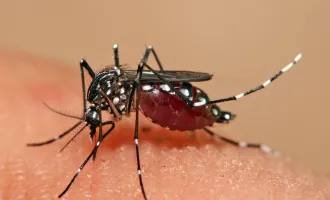Patient Safety: How to Reduce Diagnostic Errors
Have you ever driven on a familiar route without remembering how exactly you arrived at your destination? We are creatures of habit, and it is not unlikely that physicians may utilize habitual knowledge in making medical diagnoses.
Unfortunately, these skill-based activities may sometimes result in patient harm. We are human, and errors will undoubtedly occur—but why?
At the last meeting of UCSF’s Institute for Healthcare Improvement (IHI) Open School on March 11, Dr. Catherine Lucey, professor and vice dean of education at the UCSF School of Medicine explained how errors that occur in the healthcare setting parallel those of everyday life, and spoke about the common cognitive causes that turn activities into errors.
Consider the driving example. The routine steps involved are ingrained in our brains as a pre-packaged set of instructions and actions called a schema, which help us arrive at a given endpoint, in this case, our destination. If one day you are supposed to pick up a gallon of milk on your way home, you are likely to forget because this schema would kick in. Preventing this error, or “slip,” would require more monitoring and reminders to achieve the desired outcome— milk and arriving safely at the correct location.
In a similar manner, Dr. Lucey discussed having a “designated skeptic” or “designated curmudgeon” on each medical team who would catch potential cognitive biases that can sway our thinking in one direction or another. The aim is to move the team towards cognitive thinking to aid the decision-making process, thus preventing medical errors. This person could be anyone, and what better person than you—the student? You can reduce medical errors and save lives by constantly questioning everything and applying your developing knowledge base.
This discussion was just one example of the interesting topics addressed by IHI Open School at UCSF.
This year, the IHI Open School Chapter at UCSF worked hard to build a community of interprofessional students and faculty to discuss patient safety and quality improvement. Every month, we held meetings featuring esteemed guest speakers who shared their work and perspectives with an intimate and interprofessional group of students. The meetings were interactive and provided applicable information that complemented each discipline’s didactic curriculum. They served as a simple yet extremely effective way of getting involved with patient safety. In addition to Dr. Lucey, we were honored to host leaders in quality improvement including:
● Emma Sew Hoy, fourth-year pharmacy student, shared her personal experience in dealing with the consequences of medical errors.
● Linda Nguyen, PharmD, from the San Francisco VA Medical Center, taught us the multidisciplinary approach to Root Cause Analysis, a method of investigating the contributory factors to a medical error.
● Robert Wachter, MD, discussed his experience in patient safety over the last fifteen years, and how economic changes, wider public access to safety data and a shift towards value-based care are shaping future of the movement.
● Laura M. Wagner, RN, PhD, GNP, FAAN, from the UCSF School of Nursing shared her research and approach in discussing medical errors with patients and their families.
Join us in the patient safety movement at UCSF! We are currently seeking leaders to continue the student discussions around patient safety and quality improvement. Please email us at uscfihiopenschool@gmail.com and check out ihi.org to access the IHI courses. Students and faculty of all disciplines are welcome.


